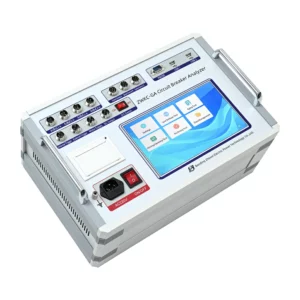Testing aged or degraded circuit breakers presents several challenges due to the potential deterioration of critical components and the increased risk of failure.
Some of the main challenges associated with circuit breaker testing on aged or degraded circuits include:
- Increased Failure Probability: Aged or degraded circuit breakers are more prone to failure due to the deterioration of internal components such as contacts, insulation, and mechanical parts. Testing these circuit breakers can potentially trigger faults or cause further damage, leading to unexpected failures during testing or subsequent operation.
- Unpredictable Performance: Aged circuit breakers may exhibit unpredictable performance characteristics, such as increased contact resistance, reduced interrupting capacity, or erratic operation. Testing such circuit breakers may yield inconsistent or unreliable results, making it challenging to assess their condition accurately.
- Safety Risks: Testing aged or degraded circuit breakers poses increased safety risks to personnel and equipment due to the potential for malfunctions, arc flash hazards, or mechanical failures during testing. Adequate precautions, including proper personal protective equipment (PPE) and safety protocols, must be implemented to mitigate these risks effectively.
- Limited Test Coverage: Aged circuit breakers may have degraded insulation or other internal faults that cannot be effectively detected or diagnosed using conventional testing methods. As a result, the test coverage may be limited, and certain types of faults or defects may go undetected during testing.
- Interference from External Factors: External factors such as environmental conditions, electrical noise, and electromagnetic interference (EMI) can affect the accuracy and reliability of circuit breaker testing on aged or degraded circuits. circuit breaker testing Special measures may be required to minimize interference and ensure accurate test results.
- Complex Diagnostic Interpretation: Interpreting test results from aged or degraded circuit breakers can be challenging due to the presence of multiple aging mechanisms, cumulative degradation effects, and interaction between different components. Advanced diagnostic techniques and expertise may be needed to analyze test data accurately and identify underlying issues.
- Limited Accessibility: Aged or degraded circuit breakers may be located in challenging environments or inaccessible locations, making it difficult to perform comprehensive testing or maintenance activities. Specialized equipment or procedures may be required to access and test these circuit breakers safely and effectively.
Overall, testing aged or degraded circuit breakers presents significant technical, safety, and diagnostic challenges that require careful planning, expertise, and specialized equipment to address effectively. It’s essential to consider these challenges when developing testing strategies and to prioritize safety and reliability throughout the testing process.
